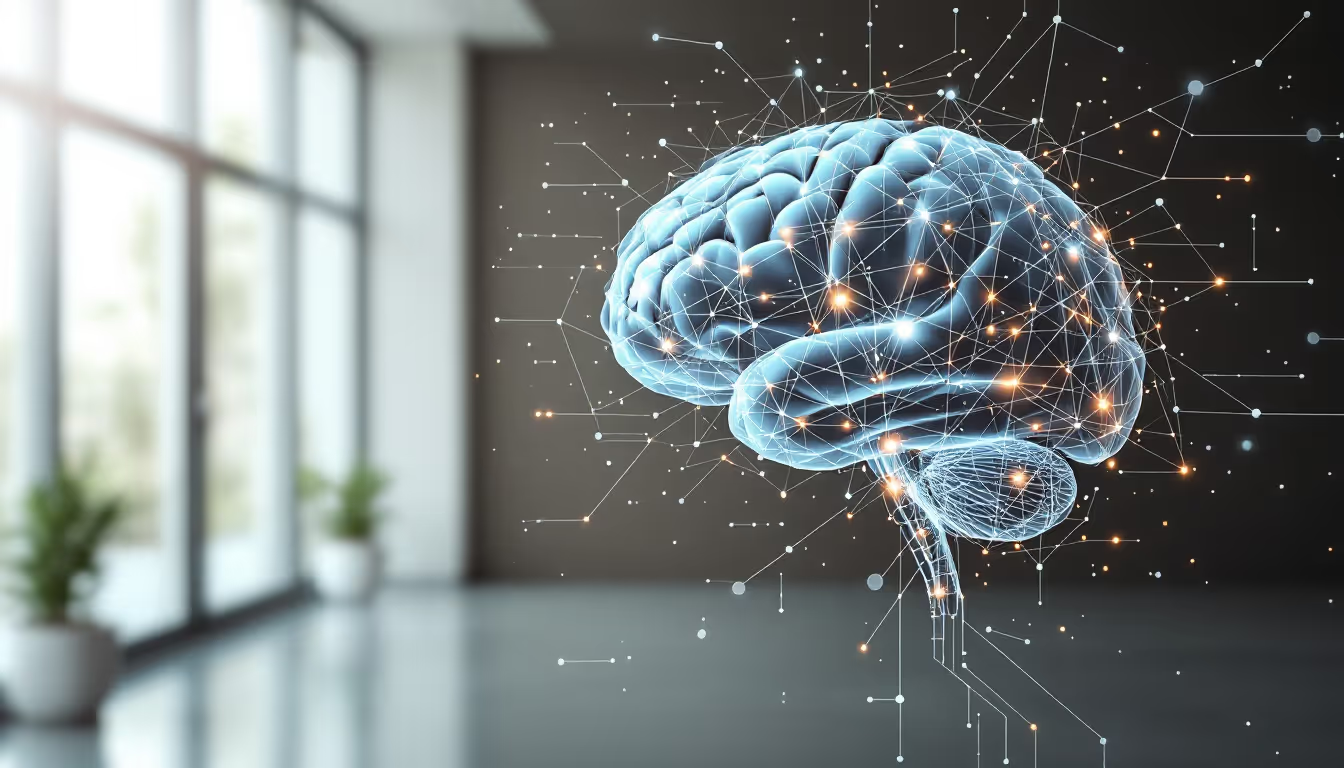Autism Diagnostic Criteria (DSM-5)


Introduction to Autism Diagnosis
Autism Spectrum Disorder (ASD) is a complex neurodevelopmental condition characterized by persistent challenges in social interaction and communication, alongside restricted interests and repetitive behaviors. The DSM-5 provides a detailed framework for diagnosing ASD, essential for guiding clinical practice, research, and support services. This article explores the DSM-5 criteria, how they have evolved, and their implications for diagnosis and treatment.
The Core Criteria for DSM-5 ASD Diagnosis

What is the DSM-5 diagnosis of ASD based on?
The DSM-5 diagnosis of Autism Spectrum Disorder (ASD) is based on specific criteria emphasizing areas of social communication and interaction. These include:
- Social-emotional reciprocity: Difficulties in sharing emotions or interests, which can manifest as abnormal social approaches or challenges in responding to others.
- Nonverbal communication: Issues such as poor eye contact, lack of facial expressions, and difficulty using body language appropriately.
- Relationships: Challenges in developing and maintaining relationships, including problems adjusting to different social contexts.
In addition to these social communication deficits, the DSM-5 stipulates that individuals must exhibit at least two of four types of restricted and repetitive behaviors. These behaviors can include:
- Stereotyped speech or motor movements: For instance, repetitive hand movements or echoing phrases.
- Insistence on sameness: Intense adherence to routines, leading to significant distress at changes.
- Highly restricted interests: An unusual focus on specific topics that can dominate their interests.
- Hyper- or hyporeactivity to sensory input: Strong reactions to sensory stimuli or sensory seeking behaviors.
This diagnosis is unified under ASD, incorporating what were previously separate classifications like Autistic Disorder and Asperger Syndrome. Moreover, the DSM-5 introduces a severity rating system that categorizes support needs into three levels, facilitating a tailored approach to interventions and resources for individuals with autism.
Significant Evolution of Diagnostic Criteria

How have the diagnostic criteria for autism evolved in the DSM versions?
The evolution of diagnostic criteria for autism across the different editions of the Diagnostic and Statistical Manual of Mental Disorders (DSM) reflects an ongoing effort to accurately capture the complexities of autism spectrum disorder (ASD). In the transition from the DSM-IV to the DSM-5, significant changes were made that consolidated previous diagnoses, such as autistic disorder and Asperger syndrome, into a single category: Autism Spectrum Disorder.
This shift marked a departure from a categorical view to a spectrum-based understanding, acknowledging the diverse range of symptoms and support needs individuals may exhibit. The DSM-5's criteria require persistent deficits in social communication and interaction, combined with restricted and repetitive patterns of behavior that must manifest in early development and cause clinically significant impairment in various life areas.
The DSM-5 emphasizes three critical areas of social communication deficits: social-emotional reciprocity, nonverbal communication, and relationship management. It also mandates that at least two of the four types of restricted, repetitive behaviors—like insistence on sameness or sensory sensitivity—be present. This approach not only expands the diagnostic criteria but also enhances the emphasis on functional impairment in daily life.
Implications of changes
The implications of these changes are profound. They allow for a broader and more inclusive diagnosis, accommodating individuals who may not fit neatly into former classifications. The DSM-5 also introduces a severity rating system, which helps tailor interventions to individual needs based on the level of support required. This adjustment acknowledges that symptoms can vary greatly in impact and enhances the approach to treatment and support.
Additionally, both the DSM-5 and the ICD-11 align closely in defining autism, focusing on the interpersonal and contextual factors that influence the experience of the disorder. This offers a contemporary perspective that further refines autism diagnostics in a way that is both practical and considerate of individual variability.
Levels of Severity in Autism Diagnosis

What are the levels of autism according to DSM-5?
The DSM-5 outlines three distinct levels of autism spectrum disorder (ASD) that are determined based on the amount of support an individual requires:
| Severity Level | Description | Support Requirements |
|---|---|---|
| Level 1 | Individuals at this level require support. They may have noticeable impairments in social communication and can struggle to initiate and maintain conversations. | Support is necessary for social interactions, especially during changes in routine. |
| Level 2 | This level requires substantial support. Individuals experience significant difficulties with social interactions and often communicate using short sentences, showing less effective nonverbal communication. | Ongoing support needed for most social settings, with challenges in consistent engagement. |
| Level 3 | Individuals here require very substantial support. Severe challenges in verbal and nonverbal communication manifest, often resulting in intense distress during changes to their environment or routine. | Intensive support is essential for daily functioning and to manage significant insecurities. |
These severity levels reflect the spectrum's nature, highlighting the varying degrees of symptom presentation. They are crucial for healthcare providers to customize interventions to better suit individual needs and improve outcomes.
Consolidation of Autism Spectrum Disorders
Integration of previous subtypes into ASD
The Diagnostic and Statistical Manual of Mental Disorders, Fifth Edition (DSM-5) introduced significant changes in the classification of autism by consolidating various disorders under the umbrella of Autism Spectrum Disorder (ASD). Previously separate diagnoses, including Kanner’s Syndrome, Asperger’s Syndrome, Rett Syndrome, Childhood Disintegrative Disorder (CDD), and Pervasive Developmental Disorder Not Otherwise Specified (PDD-NOS), are now recognized as part of ASD. This unification helps clarify the spectrum nature of autism, acknowledging a range of symptoms and support needs.
Impact on Diagnosis
With a single diagnosis of ASD, clinicians focus on the individual’s comprehensive profile rather than a narrow set of criteria. This approach allows for a better understanding of the degree of impairment and the specific support requirements for individuals. For instance, Asperger's syndrome is now categorized under level 1 autism, characterized by strong verbal abilities yet presenting significant challenges in social communication. This shift enhances both diagnosis and treatment strategies, fostering tailored interventions and supports for individuals across the spectrum, reflecting their diverse needs and capabilities.
| Disorder | Previous Classification | Current Status in DSM-5 |
|---|---|---|
| Kanner's Syndrome | Autistic Disorder | Part of ASD |
| Asperger's Syndrome | Asperger's Disorder | Part of ASD, Level 1 |
| Rett Syndrome | Separate Disorder | Part of ASD |
| Childhood Disintegrative Disorder | Separate Disorder | Part of ASD |
| PDD-NOS | Pervasive Developmental Disorder Not Otherwise Specified | Part of ASD |
Applying DSM-5 Criteria in Clinical Settings
What are the domains covered when assessing autism?
Assessing autism spectrum disorders (ASD) according to the DSM-5 involves examining several critical domains. The core autism symptomatology is foundational, focusing on persistent deficits in social communication and social interaction, alongside restricted and repetitive behaviors.
Other areas of evaluation include:
- Intelligence: Understanding cognitive abilities is crucial for distinguishing autism from intellectual disabilities.
- Language: Assessing both expressive and receptive language skills helps identify challenges in communication common in ASD.
- Adaptive Behavior: This refers to the skills necessary for daily living, social interactions, and functional independence.
- Neuropsychological Functions: Evaluations may explore various cognitive domains, including executive functioning and processing speed.
- Comorbid Psychiatric Conditions: Conditions like ADHD or anxiety are often present and warrant attention during assessment.
Contextual factors also play an important role in the assessment. Family functioning and parent well-being can significantly influence the child’s development and subsequent treatment outcomes.
To ensure the assessment is thorough and effective, it should involve collaboration among various professionals. Using evidence-based assessment tools enhances the process, ensuring they possess adequate psychometric qualities suitable for informing diagnosis, treatment planning, and progress monitoring.
Clinical Observations
Clinicians typically rely on direct observations of the child’s behavior in different contexts, along with developmental histories provided by caregivers. Observational data complements parent or teacher reports, giving a clearer overall picture of the child’s abilities and challenges. With DSM-5’s standardized criteria, healthcare providers can make more consistent and accurate diagnoses, leading to timely and appropriate interventions.
Importance of Early Detection and Intervention

Early signs of autism
Recognizing early signs of autism is crucial for effective intervention. Parents and caregivers may notice behaviors such as lack of eye contact, limited responses to names, or difficulty engaging in play with others. These signs often manifest before a child reaches one year old, but the need for intervention typically becomes clearer by ages two or three.
Role of caregivers and educators
Caregivers and educators play an essential role in spotting early developmental delays. They provide vital insights into a child's behavior and social skills. By documenting observations and sharing concerns, caregivers can help ensure that children receive appropriate assessments and access to therapies, leading to better long-term outcomes. Tools like the Modified Checklist for Autism in Toddlers (M-CHAT) can assist in identifying children who may need further evaluation based on these behaviors.
Criteria Not Better Explained by Other Conditions

Differentiating ASD from Other Developmental Disorders
In diagnosing autism spectrum disorder (ASD), it's crucial to rule out other conditions that might better explain a child's symptoms. According to the DSM-5, symptoms of ASD must not be better accounted for by intellectual disability or global developmental delay. This specificity is vital to ensure that individuals receive accurate diagnoses and appropriate interventions.
Clinicians employ various assessments during evaluation processes to distinguish ASD from similar developmental disorders. These assessments often include gathering developmental histories from caregivers and observing the child in multiple social contexts.
Furthermore, the need to differentiate ASD from other conditions like Social Communication Disorder (SCD) is highlighted, as SCD lacks the repetitive behaviors characteristic of ASD. This underscores the importance of comprehensive evaluations in making accurate diagnoses, ensuring that individuals receive tailored support suited to their unique needs.
The Role of Documentation in Autism Diagnosis
Required documentation
When diagnosing Autism Spectrum Disorder (ASD), accurate documentation is critical. The DSM-5 specifies that assessments should include detailed accounts of an individual's developmental history, focusing on symptoms that have persisted since early childhood. This involves collecting information from parents or caregivers regarding observed behaviors and social communication challenges.
The documentation must also record the presence of restricted and repetitive behaviors. Clinicians often utilize standardized tools like the Modified Checklist for Autism in Toddlers (M-CHAT) to further operationalize these observations, ensuring a thorough evaluation process.
Use in clinical practice
In clinical settings, proper documentation facilitates effective communication among healthcare providers, educators, and families. This alignment is essential for tailoring interventions to meet the specific needs of the individual. The documented evidence not only assists in diagnosis but also provides a foundation for creating individualized support plans.
By adhering to the guidelines set forth in the DSM-5, clinicians can ensure that they are capturing the necessary details to ascertain both the presence and severity of ASD, ultimately aiding affected individuals and their families.
Conclusion
The DSM-5 diagnostic criteria for Autism Spectrum Disorder provide a structured and comprehensive approach for understanding and diagnosing autism, reflecting advancements in the recognition of autism as a spectrum. This framework enables accurate diagnosis and facilitates access to tailored support services, benefiting individuals, families, and professionals involved in autism care. As research progresses, these criteria may continue to evolve, further enhancing the understanding and management of autism spectrum disorders.
References
- Autism diagnostic criteria: DSM-5
- Clinical Testing and Diagnosis for Autism Spectrum Disorder - CDC
- Diagnostic Criteria for Autism Spectrum Disorder in the DSM-5
- IACC Subcommittee Diagnostic Criteria - DSM-5 Planning Group
- DSM-5 Criteria for Autism Explained (In Picture Form)
- Criteria and tools used in an autism assessment
- Autism Spectrum Disorders: Diagnosis and Treatment - NCBI
- Decoding autism in the DSM-5
Recent articles

Dairy And Autism
Exploring Dietary Dynamics in Autism: The Role of Dairy and Beyond

Lead Exposure & Fevers During Pregnancy Lead to Autism
Exploring the Impact of Prenatal Environmental Factors on Autism Spectrum Disorder Severity

Providing Coping Strategies Through Counseling for Teens
Empowering Teens with Essential Coping Skills through Counseling

How Behavior Analysis Helps Children with Impulse Control Issues
Unlocking Calm: The Science Behind Behavior Analysis in Managing Impulsive Actions

Benefits of Art Therapy for Autism
Exploring Creative Pathways: How Art Therapy Enhances Lives of Children with Autism

Tips for Encouraging Speech Device Usage in Daily Life
Empowering Communication: Integrating Speech Devices Seamlessly at Home and Beyond


